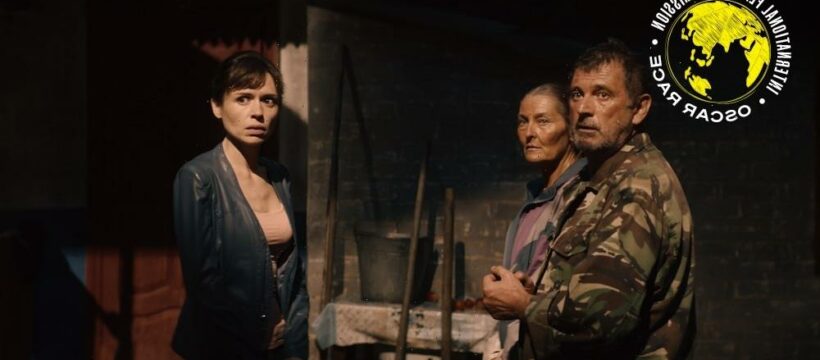In the bleak omnibus film “Bad Roads,” four tension-filled tales set along the dangerous byways of Ukraine’s Donbass region during wartime illustrate survival strategies practiced by civilians. Although the various episodes don’t quite add up to a strong narrative whole, they do gain extra resonance from current events in this troubled region. Naturalistic in visual style and performance, they also introduce a new talent to watch in debuting writer-director Natalya Vorozhbit, better known as a playwright. The film, adapted from her earlier play, premiered in Critics’ Week of the 2020 Venice Film Festival. The Ukrainian Film Academy named the helmer “Discovery of the Year,” along with other kudos.
The four segments vary in length, with the first two each slightly over the 20-minute mark, the third — and most difficult to watch — clocking in at approximately 43 minutes, and the last, a tight 15 minutes. Each revolves around a fraught encounter that seems as if it could tip into extreme violence at any moment. Fortunately for viewers, only one goes that far.
The narrative glue holding the four episodes together is far looser than in other omnibus films. Each of the locations in the conflict zone is different and so are the characters, yet if one listens carefully to the dialogue, each sequence plants an idea that is expanded upon in the subsequent story.
The first episode takes place on a literal bad road where the first thing we see are ruts of dried mud shimmering among potholes under a hot summer sun. It’s where a slightly drunk school principal (Igor Koltovskyy) encounters an ATO (anti-terrorist operation) checkpoint and can’t find his passport. His exchanges with an earnest soldier (Vladimir Gurin) and his short — and short-tempered — commander (Andrey Lelyukh) come perilously close to igniting the commander’s fuse while also being blackly funny.
The principal’s (maybe mistaken) belief that he saw one of his female students poking her head out of the soldiers’ bunker seems to inspire the far less compelling second sequence, which takes place at a bus stop. As the sky darkens from twilight to black, three teenage girls sit on a bench, smoking, talking and playing with their phones. They’re waiting for their soldier boyfriends. Soon, only one girl (Anna Zhurakovskaya) is left. Instead of her beau, it’s her grandmother (Yuliya Matrosova) that arrives.
What takes place between young women and soldiers? The traumatic third episode centers on a journalist (the brave Maryna Klimova, who is also the star of the Slovak Republic’s Oscar submission “107 Mothers”) taken captive by an opposition soldier (Yuri Kulinich) in an abandoned underground bunker that once housed a spa. As he threatens her with physical and sexual violence, his expletive-filled language is equally sadistic. Her savvy responses show her refusal to be cowed as she constantly attempts to humanize their interaction. Canny staging and dim lighting mask the worst of the brutality.
An anecdote the journalist recounts about a dead chicken provides the basis for the dark, absurdist final tale in which a pretty young woman (Zoya Baranovskaya) in a Peugot accidentally kills a hen that runs onto the road at night. She stops at a nearby farm to inform the owners (Oksana Voronina and Sergei Solovyov), who wouldn’t be out of place in a Ukrainian adaptation of “The Texas Chainsaw Massacre.” What they do with her naive offer of compensation is both chilling and amazing to watch.
Per the press kit, the accomplished cast, totally credible as ordinary people, is comprised mostly of regional theater actors and took 18 months to assemble. Helmer Vorozhbit budgeted plenty of rehearsal time for the players and drew upon her experience of watching various theater directors at work on her plays.
Top-notch tech credits also make the film stand out. First-time feature cinematographer Volodymyr Ivanov proves to be a true artist with light and the CinemaScope format, while Oleksandr Shatkivskyi’s realistic sound design, charged with the distress of barking dogs, delivers more unease than many musical scores.
Source: Read Full Article
